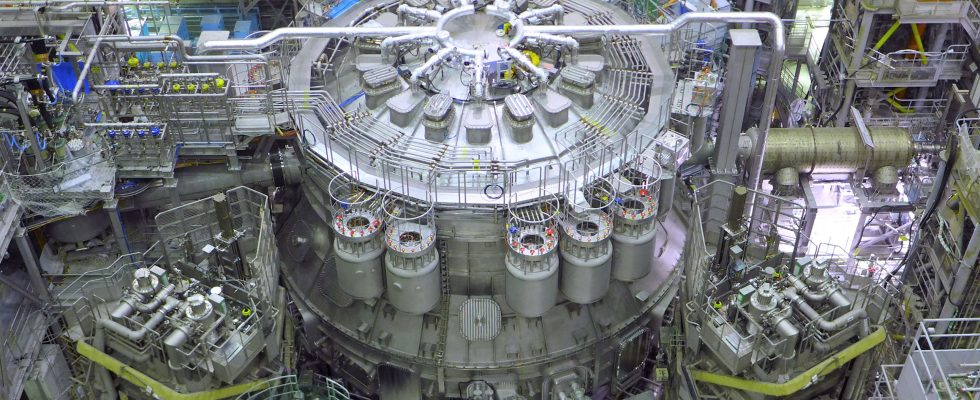A vast Japanese-European experimental nuclear fusion project, “the energy of the stars” arousing many hopes, was inaugurated this Friday, December 1, in Japan on a partner site and complementary to the Iter program in France, which accumulates the setbacks and delays. Installed at the Naka Fusion Institute, about a hundred kilometers northeast of Tokyo, the JT-60SA is currently the largest operational “tokamak” (experimental nuclear fusion reactor) in the world, awaiting completion. of his big brother Iter.
“Today is a great day in the history of fusion […]. With this tokamak, Japan and Europe are positioning themselves as world leaders in fusion research “by magnetic confinement, greeted the European Commissioner for Energy Kadri Simson during a ceremony in Naka broadcast online. This machine ” brings us closer to fusion energy, combining high and sustained performance. It is the result of a collaboration between more than 500 scientists and engineers and more than 70 companies in Europe and Japan,” said Sam Davis, deputy manager of the JT-60SA.
The result of agreements between Japan and the European Union signed in 2007, the construction of this tokamak, 15.5 meters high and 13.5 meters in diameter, lasted from 2013 to 2020. And on October 23, it was succeeded for the first time in producing plasma, a very low density gas essential for nuclear fusion. The JT-60SA “must be used to conduct various experiments before the completion of Iter,” recalled Masahito Moriyama, the Japanese minister in charge of Science and Technology. The lessons learned from this reactor should therefore be valuable for the Iter reactor, which will be approximately twice as large and which will have a volume of plasma almost five times greater.
A future “key component of the energy mix”?
The fusion of two light atomic nuclei (hydrogen) to create a heavy one (helium) generates energy, and it is this process which is at work in stars like our Sun. It differs from fission, a technique currently used in nuclear power plants, which consists of breaking the bonds of heavy atomic nuclei. Fusion is considered a very promising future energy source because it does not generate greenhouse gases, produces less radioactive waste than current nuclear power plants, and unlike the latter would be safe, according to scientists.
“Fusion has the potential to become a key component of the energy mix in the second part of this century,” Kadri Simson added on Friday. “It can be a low-carbon, safe, reliable and predictable source of energy,” said the European Commissioner for Energy. Obtaining this energy, however, is only possible by heating plasma to extremely high temperatures (more than a hundred million degrees Celsius). To prevent this material from cooling and ensure that it remains stable, it must be confined, for example using mega-magnets in the case of JT-60SA and Iter.
Above all, for this energy source to be viable, it will be necessary to ensure that the energy produced exceeds that used to cause the reaction. Using another plasma confinement technology, using an ultra-powerful laser, the United States was the first to achieve a net energy gain with nuclear fusion a year ago, and has reissued this feat last summer, while also improving yield.
Encouraged by these successes, the American government now hopes to begin the commercial exploitation of nuclear fusion within the next ten years. The pharaonic Iter construction site in Cadarache (south of France) is accumulating setbacks, leading to delays and additional costs, notably due to defective essential parts. Originally planned for 2025, its first plasma production could be postponed for several years.
